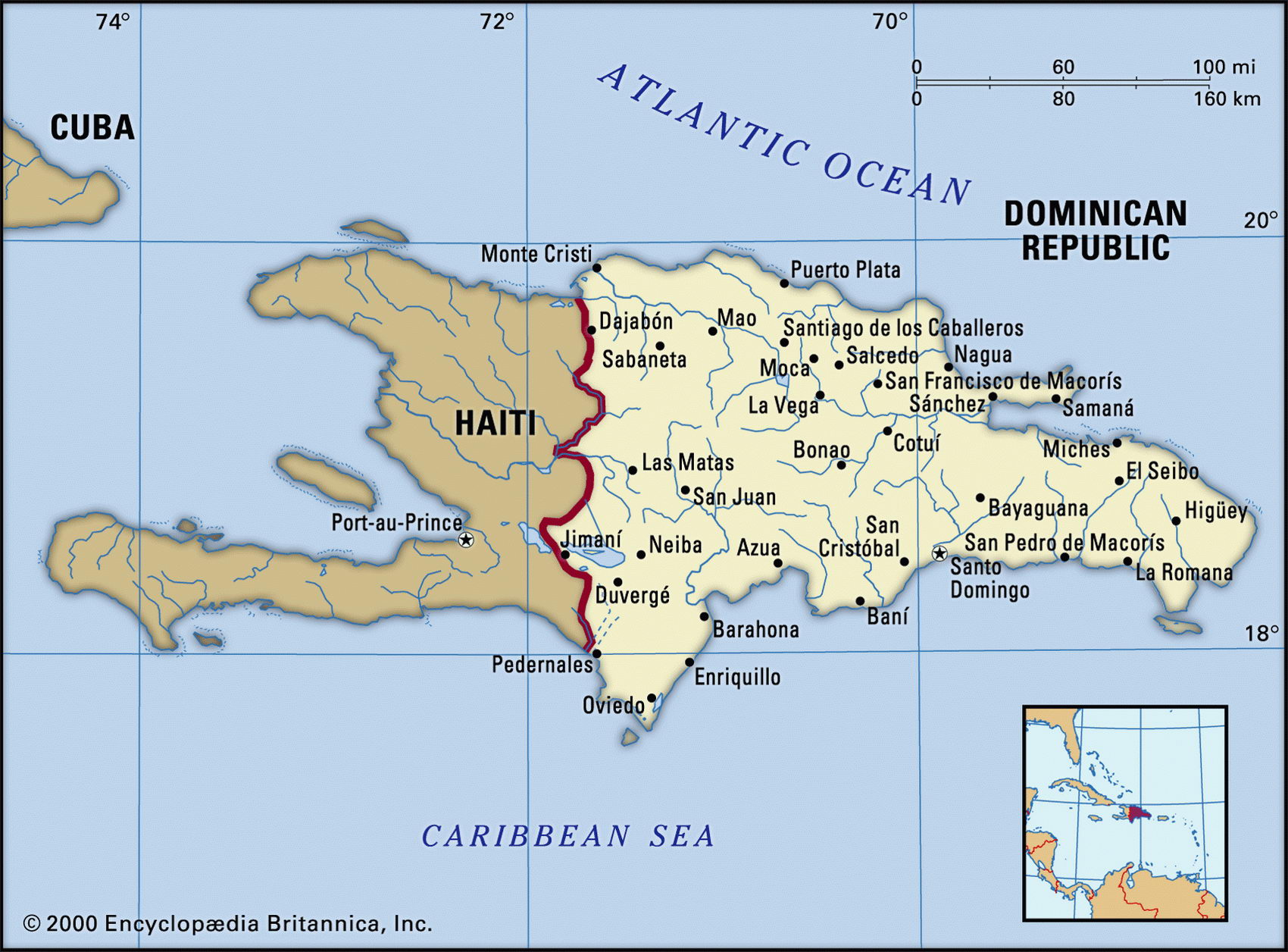Map of Dominican Republic and geographical facts

Dominican Republic Fact File
Official name Dominican Republic
Form of government Republic with two legislative bodies (Senate and Chamber of Deputies)
Capital Santo Domingo
Area 48,730 sq km (18,815 sq miles)
Time zone GMT-4 hours
Population 8,722,000
Projected population 2015 10,232,000
Population density 179 per sq km (463.6 per sq mile)
Life expectancy 73.7
Infant mortality (per 1,000) 33.4
Official language Spanish
Other language French Creole
Literacy rate 82%
Religions Roman Catholic 95 %, other 5 %
Ethnic groups Mixed African-European 73%, European 16%, African 11 %
Currency Peso
Economy Agriculture 46%, services 38%, industry 16%
GNP per capita US$ 5,800
Climate Tropical, with wet season May to November Highest point Pico Duarte 3,175 m (10,416 ft) Map reference Page 429
The second largest Caribbean nation in both area and population, the Dominican Republic occupies the eastern two-thirds of the island of Hispaniola. The island was visited by Christopher Columbus in 1492 and in 1496 his brother founded the city of Santo Domingo on its southern coast— the oldest Spanish city in the Americas. It was first colonized by Spain but the development of its sugar industry resulted from a period of French control. The country won independence in 1844 and since that time it has been ruled by a series of dictators with only short intervals of democracy. A bitter civil war in 1965 brought the intervention of the USA, which has kept a watch on Dominican affairs since then. Civil unrest continues. In 1996 President Balaguer had to resign after rigging the elections. The elections in 2000, however, were fair.
With a mountainous landscape, including the highest point in the West Indies, Pico Duarte, the Dominican Republic contains three considerable ranges—the Cordillera Septentrional in the north, the massive Cordillera Central, and the southern Sierra de Bahoruco. Between these ranges and to the east lie fertile valleys and lowlands. These include the Cibao Valley in the north, the Vega Real, and the coastal plains where sugar plantations are found. Because of the mountainous terrain there are wide variations in temperature and rainfall. Low-lying areas in the south and east support a dry savanna vegetation suitable for livestock raising. The Dominican Republic also has the lowest point in the West Indies—Lake Enriquillo, 44 m (144 ft) below sea level. The lake bisects the mountains in the southwest.
While still heavily dependent on its traditional agricultural base, in recent years the economy has been supplemented by industrial growth (making use of a vast hydroelectric potential), and a large increase in tourism. The Dominican Republic has good beaches and a hotel capacity of 30,000 rooms, the highest in the Caribbean. Sugar is still the leading agricultural export, followed by coffee, cocoa, tobacco, and fruit. Nickel and gold mining are increasing in economic importance. Subsistence farming provides most of the rural population with its livelihood, the staple crops being rice and corn. State-owned sugar plantations provide another source of employment. Illegal narcotics also play a part in the economy; the country is a transshipment point for drugs bound for the USA.